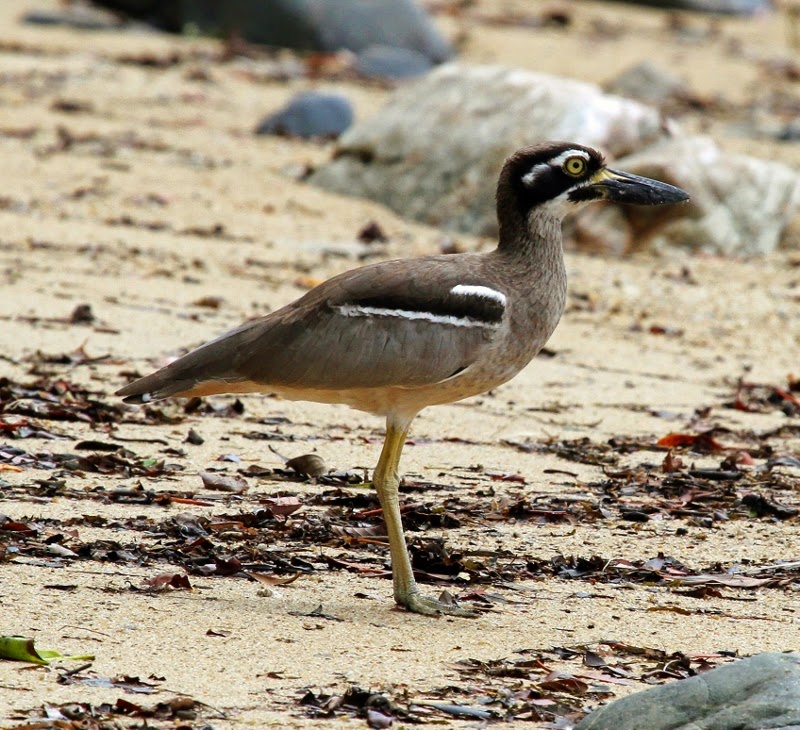 |
| Photo by Greg Schechter (Wikipedia) |
Common name:
beach thick-knee (en); alcaravão-dos-recifes (pt); œdicnème des récifs (fr); alcaraván picogruesso australiano (es); rifftriel (de)
Taxonomy:
Order Charadriiformes
Family Burhinidae
Range:
This species is found along the coasts of south-eastern Asia and northern and eastern Australia, from the Andaman Islands, in India, through peninsular Thailand, Malaysia and Indonesia, and into the Philippines, Papua New Guinea, the Solomon Islands, Vanuatu, New Caledonia and from northern Western Australia to south-eastern New South Wales, in Australia.
Size:
These birds are 55-57 cm long and weigh around 1 kg.
Habitat:
The beach thick-knee is found in various coastal habitats, mainly rocky and sandy intertidal, mudflats and tide pools, also using sea cliffs and rocky offshore islands, riffs and coral ridges, coastal lagoons, mangroves and salt marshes.
Diet:
They feed on marine invertebrates, particularly crabs such as the light blue soldier crab Mictyris longicarpus and the dark blue soldier crab M. platycheles.
Breeding:
Beach thick-knees breed in September-November. They nest on bare ground, usually on sandbanks, sandpits, or islands in estuaries, coral ridges, among mangroves or in sand surrounded by short grass and scattered trees. The female lays a single egg, which is incubated by both parents for 30 days. The chicks leave the nest soon after hatching, but remain under the care of both parents for 7-12 months.
Conservation:
IUCN status – NT (Near-Threatened)
This species has a very large breeding range, but the population is estimated at just 4.000 individuals. The population is suspected to be in decline owing to human disturbance of beach habitats, and predation by introduced mammals.







